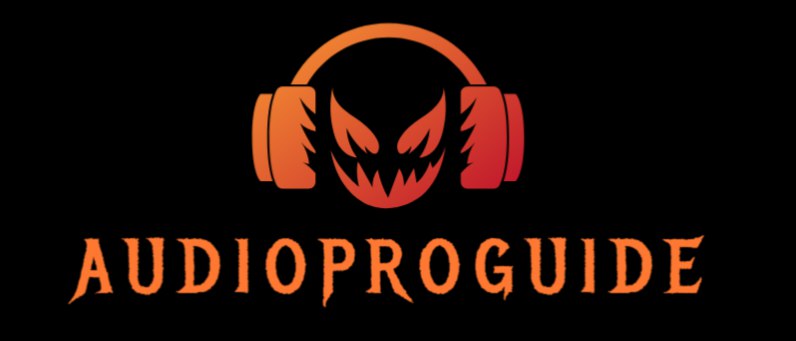The world of audio lives in a delicate dance between fidelity and file size. We crave crystal-clear music, but storage limitations often force us to make compromises. Enter the art of bitrate conversion, a balancing act where we shrink files without sacrificing the soul of the sound. In this article, we’ll delve into the intricacies of bitrates, explore the trade-offs between quality and size, and equip you with the knowledge to convert your audio like a seasoned pro.
General Information about Audio Bitrates
Audio bitrates serve as a critical metric in the digital representation of sound, encompassing the amount of data required to encode one second of audio. Typically measured in kilobits per second (kbps), this parameter plays a pivotal role in determining the quality and file size of audio recordings. Understanding the fundamentals of audio bitrates involves exploring their historical context and appreciating their significance in the evolution of digital audio.
Historically, audio bitrates have evolved alongside advancements in digital technology. In the early days of digital audio, storage and bandwidth constraints necessitated the development of efficient compression algorithms to reduce file sizes while maintaining acceptable audio quality. This led to the emergence of popular audio codecs, such as MP3, which allowed for the widespread distribution of digital music.
The concept of bitrates is closely tied to the trade-off between audio quality and file size. Higher bitrates generally result in better audio fidelity but also produce larger file sizes, demanding more storage space and network bandwidth. On the other hand, lower bitrates sacrifice some audio quality in favor of reduced file sizes, making them suitable for scenarios with limited storage or bandwidth resources.
In the contemporary landscape, audio bitrates continue to play a crucial role in various applications, ranging from music streaming services to podcast distribution and beyond. The choice of bitrate depends on the specific requirements of the application and the preferences of the target audience.
As technology advances, new audio codecs and compression techniques emerge, offering more efficient ways to balance quality and file size. Understanding the nuances of audio bitrates is essential for content creators, streaming platforms, and anyone involved in the production and distribution of digital audio, as it directly impacts the end-user experience. The subsequent sections of this paper will delve deeper into the specifics of different audio bitrates, the factors influencing their choice, and the tools and methods available for bitrate conversion.
Understanding Different Audio Bitrates
The landscape of audio bitrates is diverse, encompassing a spectrum of options that cater to varying needs and preferences. This section will delve into the nuances of different audio bitrates, shedding light on the impact they have on audio quality and file size. It will also explore the distinctions between uncompressed, lossless, and lossy compression methods, providing insights into common codecs such as MP3, AAC, and FLAC.
- Uncompressed Audio: Uncompressed audio, represented by formats like WAV and PCM, maintains the highest possible audio quality. Each sample of the original recording is preserved without any compression, resulting in large file sizes. While this format ensures top-notch quality, it is impractical for most applications due to its demand for extensive storage space.
- Lossless Compression: Lossless compression methods, exemplified by formats like FLAC (Free Lossless Audio Codec), reduce file sizes without sacrificing audio quality. These codecs employ sophisticated algorithms to compress data in a reversible manner, allowing for the exact reconstruction of the original audio during playback. Lossless compression is favored in scenarios where high fidelity is crucial, such as in music production and archival.
- Lossy Compression: Lossy compression, as employed by popular codecs like MP3 and AAC, achieves significant file size reduction by discarding some audio information deemed less perceptually significant. While this results in smaller file sizes, it introduces a trade-off with audio quality. The extent of quality loss is determined by the chosen bitrate; higher bitrates yield better quality but larger file sizes, while lower bitrates prioritize compression over quality.
- Common Codecs: Understanding the specifics of common audio codecs is essential in navigating the diverse landscape of bitrates. MP3, for example, is widely used for its balance between file size and acceptable audio quality, making it suitable for online streaming and portable media players. AAC, a successor to MP3, offers improved efficiency and is often used in applications like iTunes and YouTube.
- Bitrate Considerations: The choice of bitrate within a specific codec is a critical decision. Higher bitrates, such as 320 kbps in MP3, can approach near-CD quality but result in larger file sizes. Lower bitrates, like 128 kbps, reduce file sizes significantly but may exhibit noticeable quality degradation, especially in critical listening environments.
Understanding these distinctions is crucial when selecting the appropriate audio bitrate for a given application. As the subsequent sections will explore, factors such as the purpose of the audio, target audience, and available resources play pivotal roles in making informed bitrate choices during the conversion process.
Factors Affecting the Choice of Audio Bitrate:
The selection of an appropriate audio bitrate is influenced by a multitude of factors that encompass both technical considerations and user experience priorities. This section will explore these factors, providing a comprehensive understanding of the elements that contribute to the decision-making process.
- Purpose of the Audio: The intended use of the audio content plays a significant role in determining the suitable bitrate. For high-fidelity music production or critical listening applications, a higher bitrate may be preferred to preserve intricate details. In contrast, voice recordings or background music for casual listening might warrant lower bitrates, prioritizing efficient storage and streaming.
- Target Audience: Different audiences may have distinct expectations and preferences regarding audio quality. Audiophiles and music enthusiasts may demand higher quality files, while general consumers in streaming scenarios might prioritize faster buffering and reduced data consumption, allowing for smoother playback.
- Storage Constraints: The availability of storage space is a practical consideration. Devices with limited storage, such as smartphones, may benefit from lower bitrates to conserve space. Conversely, archival purposes or applications with ample storage resources may opt for higher bitrates to retain maximum audio quality.
- Network Bandwidth: In the context of streaming services, network bandwidth is a crucial factor. Higher bitrates require more bandwidth for smooth streaming, potentially leading to buffering issues on slower connections. Adaptive bitrate streaming, which dynamically adjusts the quality based on the viewer’s internet speed, addresses this concern by delivering an optimal viewing experience across varying network conditions.
- Playback Devices: The capabilities of the playback devices influence bitrate choices. While high-end audio equipment can showcase the nuances of higher bitrates, mobile devices with smaller speakers or headphones may not fully exploit the benefits of ultra-high-quality files. Compatibility with a wide range of devices often drives the selection of a balanced bitrate.
- Content Type: The type of audio content, whether it’s music, speech, or ambient sound, also guides bitrate decisions. Music with intricate instrumentation and dynamic range may benefit from higher bitrates, whereas speech-focused content may tolerate lower bitrates without significant perceptual quality loss.
| Application | Recommended Bitrate Range (kbps) | Estimated File Size per Minute (MB) |
| High-fidelity Music | 256 – 320 | 2.4 – 3.0 |
| Standard Music Streaming | 128 – 192 | 1.2 – 1.8 |
| Podcasts and Audiobooks | 64 – 128 | 0.6 – 1.2 |
| Voice Recordings | 32 – 64 | 0.3 – 0.6 |
| Internet Radio Streaming | 64 – 128 | 0.6 – 1.2 |
Tools and Methods for Converting Audio Bitrates
Audio bitrate conversion involves a variety of tools and methods, each offering different levels of control and convenience. One common approach is to use specialized audio conversion software. Applications like Audacity, dBpoweramp, and Format Factory provide intuitive interfaces for users to adjust bitrates, supporting multiple codecs and output formats. This category of tools is user-friendly and accessible to individuals without extensive audio editing experience.
For those engaged in professional audio production, Digital Audio Workstations (DAWs) offer built-in tools for bitrate adjustment. Platforms such as Adobe Audition, Pro Tools, and Ableton Live cater to musicians, sound engineers, and podcast producers. These DAWs provide advanced editing capabilities along with bitrate conversion functionalities, making them well-suited for complex audio projects.
Online audio converters have gained popularity for their convenience. Platforms like Online Audio Converter, CloudConvert, and Convertio allow users to upload files, choose desired bitrates, and download the converted audio—all within a web browser. However, caution is advised regarding privacy and security concerns, particularly when dealing with sensitive or copyrighted content.
Command-line tools, such as FFmpeg, offer a powerful and scriptable way to perform bitrate conversion. While these tools require a certain level of technical proficiency, they provide flexibility and automation options, making them ideal for batch processing and integration into larger workflows.
Manual methods within audio editing software allow users to adjust bitrate settings during the export or save process. This hands-on approach provides granular control over conversion parameters but may be time-consuming for large batches of files.
When dealing with a substantial number of audio files, batch processing tools become essential. Applications like XRECODE, dBpoweramp, and FFmpeg (utilizing scripts) enable users to convert multiple files simultaneously, streamlining the conversion process and saving time
Preserving metadata, such as track information and album art, is a crucial consideration during bitrate conversion. Some tools offer specific features to retain or transfer metadata seamlessly, ensuring that essential information associated with audio files remains intact throughout the conversion process.

